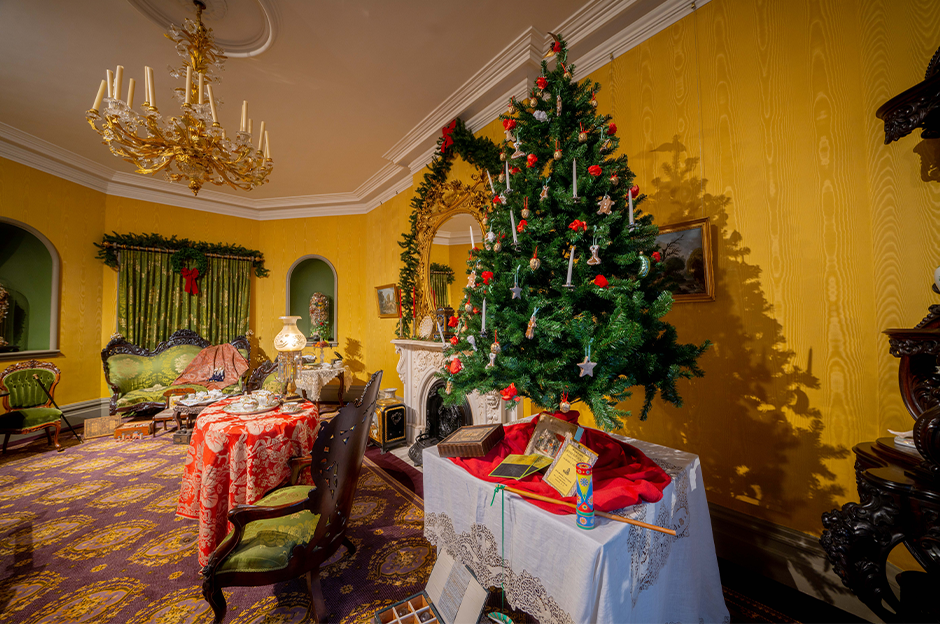Free and open to the public.
Discover why we decorate our homes with holly, poinsettias, and mistletoe during the annual holiday season. Many centuries-old celebrations are at the root of many 19th-century holiday customs. The name “yuletide” derives from the celebrations that Scandinavian and Germanic people of northern Europe created, called “yule.” Some scholars believe that yule originally began as a sun festival held on the winter solstice.
In the Dining Room, discover why holly was used by the ancient Romans. During the feast of the Saturnalia, holly decorated homes because it was the sacred plant of the god Saturn. When Christianity was established, the tradition of holly use became associated with the celebrations surrounding the birth of the Christ child. For centuries since holly has symbolized the recurring beauty of evergreens in the midst of the dormant winter landscape.
In the Parlor, find the brilliant Mexican poinsettia, which has now been adopted widely in the United States. Learn why the ancient Aztecs cultivated poinsettia plants. Their colored flowers are actually leaves that have turned a different shade of crimson red or ivory white, the only two natural colors that poinsettias display.
The Library will showcase the beauty of mistletoe. Discover how the Nordic people believed that mistletoe could resurrect the dead. This belief was based on the story of the life of Balder (god of light and goodness), who was killed by an arrow made of mistletoe but brought back to life when the tears of his mother Frigga (goddess of love) turned the red mistletoe berries white.
The Victorian fascination with exotic plants will be on display in the Bedroom. Ferns, too delicate to be grown outside, were cultivated in terrariums. Orchids became a popular status symbol of wealth and skill at horticulture by the end of the 19th century because of their rarity in North America. Usually, orchid expeditions were needed to pull them from the rain forests of South America. Greenhouses were needed to keep them year-round, an expensive proposition for any amateur gardener.



